CRN Exclusive: HPE's Channel Chief On New Service Provider Program, AWS, Microsoft Azure And Cisco Intercloud

HPE's Channel Chief Makes First Big Move
Kerry Bailey, who took the worldwide channel chief job at Hewlett Packard Enterprise in September, is making his first big move with the launch of a service provider pilot program.
Bailey, former CEO of cloud services giant Verizon Terremark, said in an exclusive interview with CRN that the program, which is being piloted by about 100 solution providers, is aimed at providing a new "disruptive" risk/reward scenario for partners that go all in with HPE on the service provider initiative.
"We are going to test out some pretty disruptive commercial models with these 100 [partners]," said Bailey. "When our fiscal year 2017 [Nov.1] hits, we can throw the switch with things we have learned."
HPE has committed to not competing against partners in a consumption-based model -- a big advantage over competitors, said Bailey, who as senior vice president of HP Cloud is overseeing the channel and service provider business. Here is an excerpt from the discussion.

How many partners have committed to the service provider pilot program?
We have about 100 right now that on that journey. They have at least $50 million in revenue. Their mix is somewhere around 60 [percent resell], 40 [percent services]. And they have been HP partners for many, many years and they are asking us to help them in the evolution. We are testing out how we bring our go-to-market to them, how we test out commercial models around risk/reward, around how we link the partner ecosystem. You have got partners that are becoming service providers that could be the platform for other managed service providers. We are tying them together. We are going to test out pretty disruptive commercial models with these 100. When our fiscal year 2017 [Nov.1] hits, we can throw the switch with things we have learned.
We are going to bring the force of our routes to market toward these partners that have transformed. I think it is the right time.

T alk about the demographics of those 100 partners that are piloting the program.
They are mixed. A lot of them are Platinum or Gold partners. Some of the partners were certified on just our server line but they have made such a strong pivot into services that they are in that 100. It wasn't really based on how much they were selling or anything you would normally judge a partner on. We have joint business plans with all of them so we know what we are selling together. We know their mix of hardware versus software versus services. We know their strategic plan on where they are headed. We know what investments they are making. And we also know the loyalty to us and the loyalty of being committed to the market.
We went through and did this full assessment across the partners and we came up across the four regions with roughly about 100. Some of those partners are sitting at 50-50 in resell/services.

Talk about some of the companies that have made the pivot to services.
UDT [United Data Technologies] in Miami has made the commitment. They are all in on being a service provider. OCSL [in the United Kingdom] has got data centers and [is] well into the transition.
Everybody is in a little different phase.

Are these 100 percent HP-exclusive partners?
Not all of them. There are more that have been dedicated to us and have confidence and trust in us and have been with us for 20 to 25 years. We are about to test out commercial models that swing my routes of market to them. I am going to bring my direct sales force and point it to their services in a risk/reward model, in a different type of compensation model. I have to start with knowing that we have a trusted business relationship. I am going to be bringing customers to them. The model really does switch to a heavy, heavy co-selling and sell-through model. I am betting on their success, and they are betting on us.

What are the most important criteria you are looking for from partners?
One of the trials in Canada actually links together a service provider, a pure consulting services-led company, and a VAR that has about 50-50 services/ hardware. Each of them had different criteria to play in this. The most important criteria each of them had is $50 million in revenue, which shows they have size and scale and, No. 2, they had to have the skill set around whatever particular service it is. We have some in Germany focused on retail and hospitals. But they have a team of 50 [to] 60 professional services people and they have a capability that we can move out into the market from a consumption-based service.

What about the companies that are building out service provider infrastructure?
The companies that are now getting into a platform or a facilities company have to put $1 million into their first set of infrastructure that we will work them on to become that initial service provider. A lot of those are doing both managed hosting as well as a shared cloud platform. So there [are] CapEx requirements on those that have a business model that says they are going to be a facilities-based services provider. If you are all in on professional services and you don't have a facility, then you have got to have at least 50 professional services people so we can bring a level of scale to this.

What percentage is building their own data centers or is it a co-location model in an HP-approved facility?
We have yet to bring the co-lo model to them. Of the 100, about 25 of them have a data center. OCSL has several data centers -- one they own and another that is a co-lo center. UDT is not going to be building a data center. They are going to use co-location. The majority of the partners are using co-location. Look at Equinix and their growth. Owning the facilities is not going to differentiate the business model for most of these companies that are transforming from a reseller to a service provider model.

Talk about the difference between HPE and EMC Virtustream or Cisco Intercloud.
We have made it clear that we are not going to compete with partners in the cloud space. That is a big deal. Trust is the biggest thing that they wanted to hear from us [as well as] an alignment of strategy. In addition to not competing with them, we are bringing our customers and our direct route to markets to them. That means we are betting on their business.
We are in this together. We are going to guarantee their success because their success is our success. So many companies have gotten into this and either the vendor has competed with them so they couldn't get the revenue, or they just didn't have enough experience on how to bring this type of consumption-based services to partners. This is a win-win. We know our partners and our partner ecosystem is going to be our consumption strategy. We are not going to compete with them on that consumption strategy. And we are going to evolve with them through their evolution to their new business model.
All these partners are aggressive. They see disruption as an opportunity and they see us taking them to the promise land together here.

Talk about the turmoil in the market with carriers selling data centers and making big changes.
On the telco side of the business, everyone jumped out with the capital, the big data centers and the big platforms, really believing everything was going to shift heavily over to a tier-one service provider model and they would be the winners. The thing that was missing is they lacked the go-to-market.
I don't even think it was the competition with AWS or Google or Azure. They did not have the ability to bring that partner ecosystem a go-to-market. Now people are retrenching back into their core business on the telco side. They are trying to move in a different direction.

Talk about how you see the channel evolving around the consume strategy.
We have great cloud builders and great partners. When I got deep into the disties, resellers and VARs making a pretty big transformation of their business model, I found the trust and overall reliance on HPE is unbelievable.
I think the biggest thing that hit me is they have double-sided disruption going on right now. On the supply side, they are asking who is going to stand with us? IBM made their change. We now have Dell-EMC. You have AWS disrupting them. They are asking who is standing with us in this transformation?
The second piece is they have to make the decision as to what their business model is going to be: Are they going to focus on SMB and have higher levels of transactional services and go with the profit pools they have, or are they going to become a services company, cloud company or services provider?

Talk about the HPE channel commitment versus the competition.
Our public cloud, our consume model, is going to be our channel, period. We are not going to be competitive with it. You saw the news on our public cloud piece [HP exiting the Helion public cloud business effective Jan. 31 to focus on managed and virtual private cloud].
Ultimately, I don't know any other company that has said we are not going to compete with the channel. I am going to turn your consume strategies into a SKU, and we are going to be better together by going after this market as it disrupts. We will show you with very strong actions how our partners will be our single SKU for consume.

What kind of feedback are you getting from partners on the pilot program?
Partners that have been with us for 26 years see the evolution of the market and see us continuing together. They view this model as their protection for the next 25 years. Yes, this is about their competencies and their capabilities. But it is more about betting their business on HP for their entire history.
Look at our commitment to the channel. Seventy percent of our revenue for HPE runs through the channel. Look at what we announced in the Americas. Our direct sales reps have 500 accounts. Everything else will be the channel.
With public cloud, there is a lot of controversy. But we looked at it and said we are not going to compete with the channel. Our actions have been pretty damn bold around the channel. This is our next step. We are going to show with actions how we are going to make the consumption model work for our trusted partners on this journey.

What is HPE's view on private cloud versus public cloud?
We just did independent research on 1,200 different enterprises out there on what is the right mix with regard to how much of their workloads will be in a private cloud, how much will be out in a public cloud and how much will be in a virtual private cloud. When you look at industries like manufacturing, health care and finance, they say the high 70 percentile of workloads will be in private cloud.
Our cloud builders are enabling the internal enterprise to be a service provider creating self-service, automation, self-service catalog, all of those pieces.
We are the industry leader in private cloud. The partners are putting all the services around that and are enabling internal IT to move workloads and create service catalogs to become an internal service provider. We are up to 3,000 private clouds deployed.

Talk about the Microsoft Azure partnership.
It is all about the right mix [of] strategy, and that is how Microsoft comes into play.
The reason we have Microsoft is they have 70 services they can offer -- Office 365, the applications in Azure -- that a private cloud provider needs to enable for an internal service provider to get to so they still maintain control of IT. Microsoft is a great tier-one cloud provider to have that hybrid connection to. Think about the tier-three service providers. This helps them roll out private cloud.
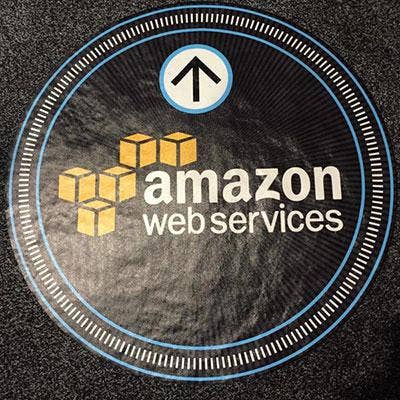
What is the threat here to Amazon Web Services with this new service provider network?
I will never be one to beat up AWS. Frankly, we enable a lot of our customers and partners to interact with AWS. And I think AWS would probably even say this: When you look at the right mix and you look across varieties of vertical industries, cloud adoption for Infrastructure-as-a-Service across the entire enterprise market is sub-18 percent. It is still small.
Look at our Cloud 28 initiative in Europe. It is almost like a dating site for all of our service providers and partners and ISVs to know who can run and host data and workloads based on certain standards across Europe. I just don't think that is a business AWS is ever going to go after. They are looking for hyper-scale, scale-out workloads -- the Ubers and Netflixes of the world.
As enterprises move, I really believe there is a gap in the market. And I think you can fill it with an AWS-like experience as an internal service provider. And, by the way, some will be AWS. If it is a mobile app and it is scaling around the world, it is probably going to be AWS or Azure.

What is the call to action for partners?
The message I have been going out with is that partners need to decide where they are going to play. The time is now. The buying patterns are there now. The good news is the big tier-one cloud providers have only got $20 [billion to] $30 billion of the $3.7 trillion. Now is the time to play. Move with urgency and decide where you are going to play. You are going to have to pick your partner and get married this time. You are not going to be able to date everyone. That is just not the way it is going to work.

Why do partners have to choose one vendor partner?
When we say we are all in with our partners on a consume model, it means that we are basically looking at those strategic service providers as part of our business. We are going to turn our routes to market to them. When that happens, we have a different relationship. We are now married. And we would expect the same thing from them.
We are going to be flexible. We know it is a hybrid cloud world and they are going to have many other partners when it comes to their business. But we are going to have much more of a marriage here than dating everyone.
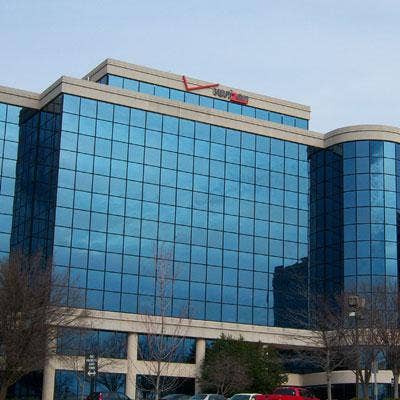
Talk about bringing your Verizon Terremark experience into the channel.
Everyone thought the world was going to be eaten by public cloud. Here we sit eight years later and there is roughly 15 percent adoption by the enterprise. So it didn't happen as fast. And through those eight years so many people jumped out to become a cloud service provider. So they jumped out and the number one issue they had was they couldn't get the route to market working. They could develop solutions, but they couldn't get the revenue to flow. So why didn't the revenue flow? It wasn't because the market wasn't ready or because AWS was eating everybody's lunch. It was because the relationship between the vendor – us with the biggest channel in the world and the biggest route to market – was not turned on to make sure we had a joint risk/reward model.
I think what we are doing now will be a force that will be different than trying to set up an ecosystem for [Cisco] Intercloud or anything else. This should move the needle. It is a bold bet. It is not ’Let's go try a bunch of things.'
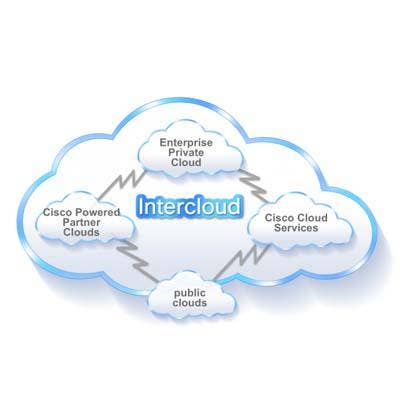
What is the difference between HPE and Cisco Intercloud?
The partners get really, really excited when a company like Cisco, IBM or HPE says if you put our solution in your data center and you create services to be sold, we are going to back you. They get excited. They spend the CapEx, put the equipment in, and they stand the service up and then find out it wasn't really a marriage, it was a dating game. That piece is what is literally broke.
So when you think of Intercloud -- and I am not picking on Intercloud, Intercloud could be the right thing for Cisco to do. But what I am saying is we became HPE to be bolder, to be faster, to break some of the models that are out there. We are starting to do it. We have already made a bunch of decisions. But this is one that is clear as day.
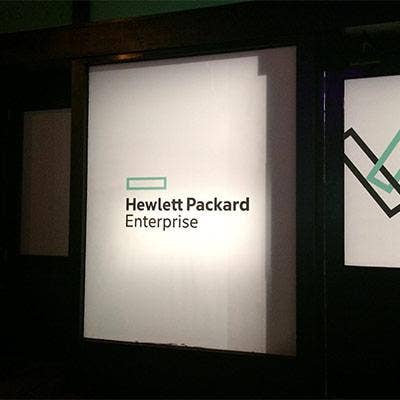
What is the message to partners around the HPE model?
What I am saying to partners is we are going to do this together. Yes, you are going to have to have certain competencies and commitment and all of that and this is what the compensation will look like. But we are in this thing together. We are going to get married here. This is going to move both companies into where the market is going.
We could sit back all day long and say we will sell you our stuff, good luck, go make a business out of it. That hasn't worked in the market today. I think we are going to be the first one to create a pretty disruptive move in the channel.

What is the problem with the other vendors' approach to this market?
Everyone has said they are going to be in this consumption business model with the partners, but when you look back they are selling you all of their infrastructure and they are not delivering on the consume side. They are telling the story that they are going to steal second base, but when you look at their actions their foot is still on first.
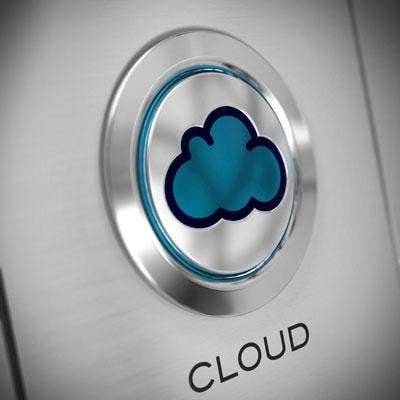
What is so disruptive about the HPE approach to the market?
We are going to turn our route to market on to that service provider. I use the analogy of a SKU because our teams easily understand how to move.
Consumption and cloud have to be easy. It has to look like a SKU. We sell SKUs today. I have to make it simple for our direct team and our partners to understand if they need a service, they can order it through a partner portal and it will go to this one service provider.
It is not a risk or a reward unless both share in it. The partner will have certain compensation benefits. They are going to benefit by getting into major recurring revenue. And we are going to help modify the risk around this.

What is the perennial problem you are solving with the channel with the new service provider program?
Ultimately, what we are breaking into shreds is the vendor/service provider relationship. The success of partners will be based on their ability to sell in this new world. That is what ultimately is going to be different here.